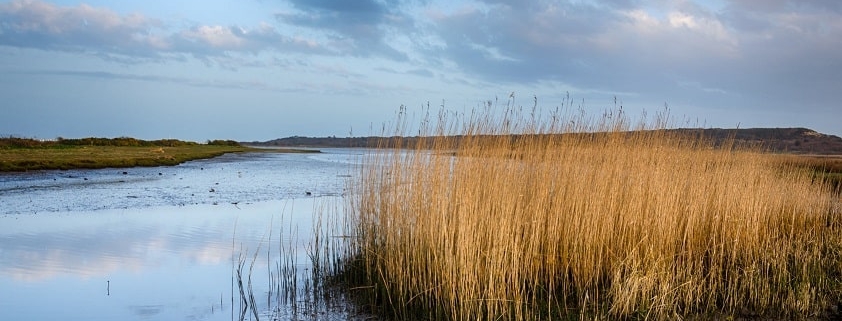The Terrain of Somatics
Just as the wetlands lie between land and sea, so too does our self perception and body meet in the fluidity of the imagination.
The territory of “somatics” is a rich expression of the continuum between body and mind or body and perception. From this perspective, the body is the ground of our experience and psychology becomes the interpretation of our felt sense, our lived experience. There’d be no psychology without a body.
Imagination is the “place” where mind and body meet. It’s an open space of constant murmuring between mind and body. There’s a continuous dialogue between these two places just as there is between land and sea. The sea shapes the land, the land pushes the water back on itself continuously.
The wetlands, the places between land and sea are constantly shaped and reshaped by the ebb and flow of tides, sunlight, wind, warmth, and cold. We have within ourselves the same kind of fluidity. This is the interface of somatic movement and somatic psychology: that is, the mind/brain/body are part of one continuous flow of perception, rather than three awkward mechanical pieces— a ghost in the machine, a computer in our skull, and a robotic attachment from the neck down that either follows orders or betrays us randomly.
Our perception is fluid, changeable, malleable, because, as neuroscience has pointed out, the brain itself is also changeable, malleable, like the wetlands. The mind perceives, our brain receives, our body responds, the world responds to us and round it goes. A continuous dance of perception shaped by the interpretation of our life experiences. This idea is central to what’s known as “neuroplasticity”. We are not “fixed”. The beliefs about our body are not “fixed” nor do we need to be “fixed”. Rather, our ways of knowing and being can grow beyond our current experience.
Our core beliefs that whisper just below the threshold of our awareness remind us about our fears of belonging, our enoughness, our self esteem, our loveability, our capacity for intimacy, our sense of safety, all the vulnerabilities we share that make each of us uniquely human, are part of “this one precious life” as a Zen teacher of mine loves to say. They are gateways to our healing if we allow them to be.
Through the decades I’ve shared tender places with people. Such vulnerability shows up as a pain in the back, or the neck, and may reveal depression, exhaustion, shame, and also shows what’s possible. When the barriers are met gently, with respect, regard, support, they can yield and the waters flow freely again. This is the hope that the realm of somatics offers: a restoration of an open, resilient way of meeting life as it arises in body and mind.



